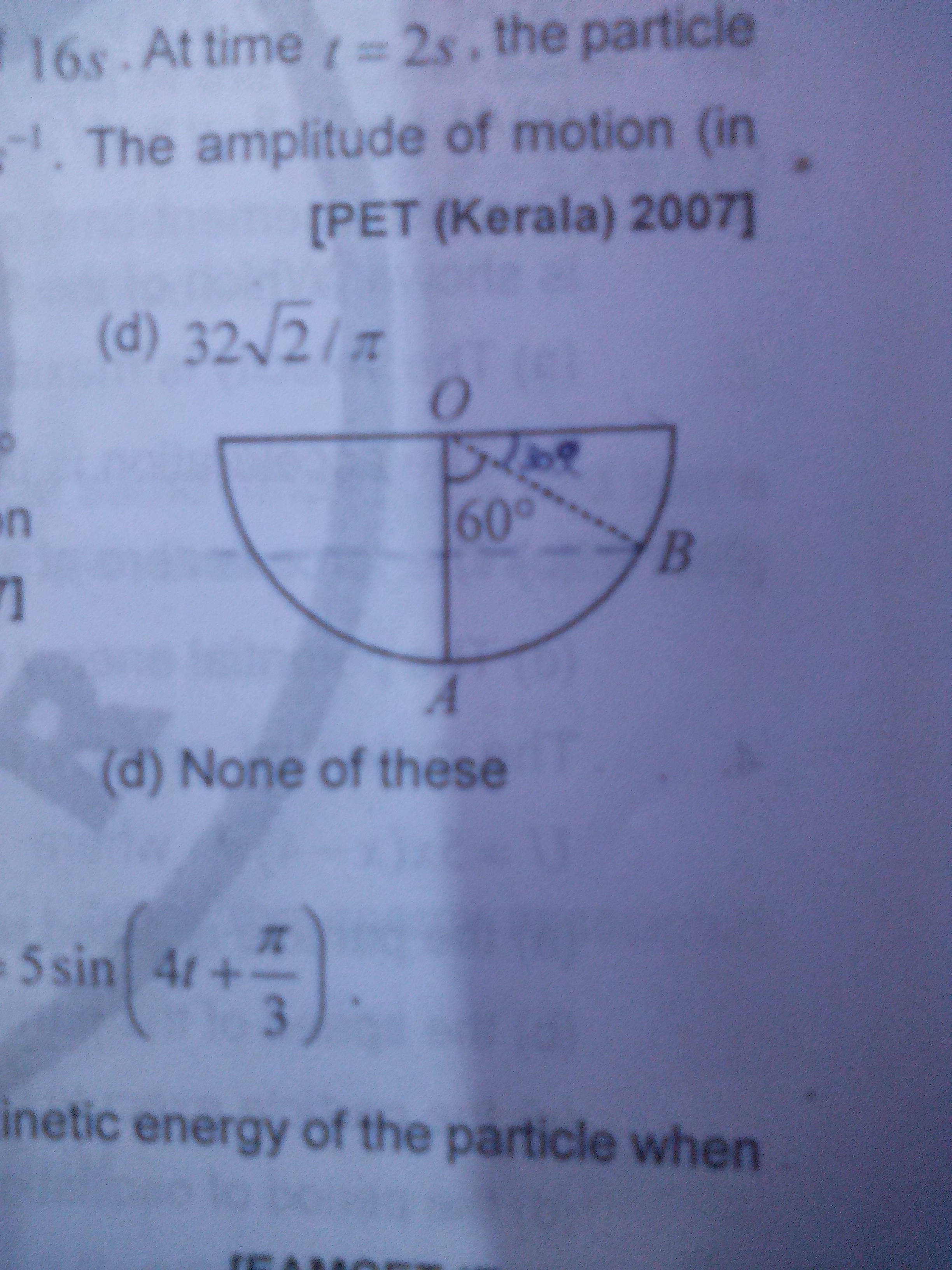Askiitians Tutor Team
Last Activity: 1 Month ago
To determine the magnitude of acceleration of a simple pendulum when it makes an angle of 60 degrees with the vertical, we can use some fundamental principles of physics, particularly those related to circular motion and forces acting on the pendulum. Let's break it down step by step.
Understanding the Pendulum's Motion
A simple pendulum consists of a mass (the bob) attached to a string or rod of negligible mass, swinging back and forth under the influence of gravity. The motion can be analyzed using the concepts of angular displacement, gravitational force, and centripetal acceleration.
Key Concepts
- Angular Displacement: The angle the pendulum makes with the vertical.
- Acceleration: The change in velocity of the pendulum bob, which has both tangential and radial components.
- Gravity: The force acting on the pendulum bob, which influences its motion.
Calculating the Components of Acceleration
When the pendulum is at an angle of 60 degrees, we can analyze the forces acting on it. The gravitational force can be broken down into two components:
- The component acting along the direction of the pendulum's motion (tangential acceleration).
- The component acting perpendicular to the motion (radial or centripetal acceleration).
Tangential Acceleration
The tangential acceleration () can be calculated using the formula:
a_t = g \cdot \sin(\theta)
Where:
- is the acceleration due to gravity (approximately 9.81 m/s²).
- is the angle from the vertical (60 degrees in this case).
Substituting the values:
a_t = 9.81 \cdot \sin(60°)
Since , we have:
a_t ≈ 9.81 \cdot 0.866 ≈ 8.51 m/s²
Radial Acceleration
Next, we consider the radial acceleration (), which is given by:
a_r = \frac{v^2}{L}
Where:
- is the linear velocity of the pendulum bob.
- is the length of the pendulum.
However, to find , we would typically need to know the length of the pendulum and the maximum height or speed at the lowest point. For simplicity, we can focus on the tangential acceleration, as it is the primary contributor to the acceleration at this angle.
Final Magnitude of Acceleration
The total acceleration of the pendulum bob when it is at an angle of 60 degrees can be approximated by considering the tangential component, as the radial component is often less significant unless the pendulum is moving very quickly. Thus, the magnitude of the acceleration at this angle is approximately:
Magnitude of Acceleration ≈ 8.51 m/s²
This value represents the acceleration due to the gravitational force acting on the pendulum bob as it swings through the angle of 60 degrees. Understanding these components helps in analyzing the dynamics of pendulum motion effectively.











